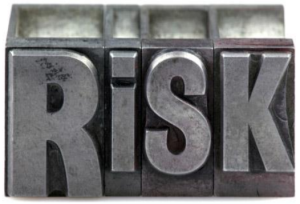
Is the market ever going to stop going down? What is going to happen next? Should I change my strategy? I’m worried about our national debt, terrorism, accounting fraud, interest rates, strengthening dollar, weakening dollar, weak earnings, consumer confidence, housing starts, investor apathy, inflation, deflation, gold prices, European debt crisis…
It has been said that the market climbs a wall of worry, and for the most part that is true. If one examines history, there has always been plenty to worry about. However, it is my belief that if taken randomly or out of context the concerns listed above individually and collectively constitute “NOISE.” They are the items that distract attention away from our values and goals, which are truly important in the development and maintenance of our wealth management strategy.
The ultimate question is, “given our goals and the potential returns of the investment markets, will our financial assets be enough?”
In previous articles we have examined the development of values and goals in relation to our definition of financial independence. We have also covered potential returns of stocks, bonds and cash along with the potential effects of inflation and taxation. In this article I want to expand on the subject of potential returns to include risk. After establishing values and goals I encourage investors to manage risk first and returns second.

What is risk?
The word risk has been in common use since the middle 1600s and is derived from the French word risqué. According to Webster’s dictionary, risk is the “possibility of loss or injury.” This definition fits investor’s depression era view of risk which, in investing, is usually dealt with by asking the question, “How much can I lose?”
This definition is appropriate if one were trying to determine the potential outcome of a single investment in a single security over a specific period of time. The potential returns on that individual investment could be a range from a total loss to a gain of several hundred percent.
If, however, the investor’s goal was to determine the potential return for a broad-based or properly diversified portfolio of securities that the investor intends to hold for several years, then the range of potential returns would be significantly smaller. As an example, the return for a broad based portfolio may be a range of potential returns from negative 24 percent to positive 40 percent, with the expected average around 8 percent. In this scenario the possibility of total loss or massive gain are eliminated so the definition of risk needs to be altered.
The definition of risk in the above scenario changes from the possibility of huge positive returns versus a total loss to the question: “How much variability will there be around my average or expected return?” This significant shift in thought moves the focus from individual investments in the portfolio to where it belongs, in the total portfolio. By changing the area of focus, the investor can stop focusing on noise found in financial markets, and can manage their total investments like a business.
Why are we concerned about volatility and risk?
The purpose of changing the focus from return management to volatility or risk management is to satisfy a major objective of wealth management. That objective is the avoidance of major mistakes. Investor attitudes run the gamut from the total avoidance of risk at one extreme, to gamblers with little risk sensitivity looking for huge potential returns at the other extreme. The problem with not considering risk at the outset is that it introduces the possibility for at least an emotional response, or at most the failure of your wealth management strategy. Investors who fully consider the potential volatility of their investments before they invest will not be surprised when that volatility actually occurs and will be better able to ride through the inevitable storms.
Consider the 1 1⁄2 year period from October 2007 to March 2009 when the stock market, as measured by the S&P 500, declined 57.7% from a level of 1,576 to 666.79. This represented one of the largest declines in stock market history, and many investors who previously considered themselves experienced long-term investors had their confidence shaken by that decline. Some even made the mistake of selling out at the bottom, missing the 120% increase in the market as of October 5, 2012. Those who sold found out too late that they had exceeded their individual tolerance for volatility. This mistake may have been avoided if they would have started with a better understanding of market history and their personal tolerance for volatility.
 Determining Risk
Determining Risk
How does one determine the possible level of volatility before investing? My favored method is to examine history to see how markets have performed during the various boom and bust cycles. By looking at historical returns, we can determine that the average returns for cash, bonds and stocks has been 3.6%, 5.5% and 9.9% respectively. By reviewing and studying the history for large company stocks represented by the S&P 500 index, we can see that the 85-year average return of 9.9% does not occur every year. The returns experienced in large company stocks between 1926 and 2011 ranged from a worst case negative 43 percent in 1931 to a best case positive 50 percent in the years 1933 and 1954. The bulk of the returns experienced during this period were significantly closer to the 9.9 percent average, but the above numbers represent extremes.
Investors generally are not concerned with positive extremes, so calculating these return probabilities is not the focus of our work. Investors do want to know what the likelihood of achieving the negative extreme would be. By using standard deviation which I will discuss further in the next article titled “Investor Toolbox”, we can determine the statistical likelihood of particular negative returns. Using the history from 1926 to 2011, the statistical probability of a negative 10 percent is approximately one in 6. That’s similar to the odds of rolling a specific number in dice. The statistical probability of a negative 30 percent or worse is approximately one in 40. This means, again statistically speaking, one out of every six years or about 16.5 percent of the time an investor should expect a return worse than negative 10 percent and 1 out of every 40 years or 2.5 percent of the time one should expect a return worse than negative 30 percent. If an individual’s tolerance for negative returns is less than the negative 30 percent, he/she should not construct a portfolio of 100 percent stocks.
These projections represent statistical probability and are not meant to be pure fact. Statistics is tricky business; in this life we would like absolute certainty, but with investing, as with many other things, absolute certainty doesn’t exist.
One important possibility must be understood: if one experiences the worst case scenarios, or 1 in 40 return, it doesn’t mean that it won’t happen again the next year. Consider the example I used above regarding the period from October 2007 to March 2009. That decline stretched over all or part of three consecutive years.
It is not possible to determine what market returns will be in the short-term, but investors must be informed what potential returns exist. If the potential negative goes beyond an individual’s tolerance for loss, the investment should not be made. If after making this determination the individual still moves forward, then he is not investing, he is gambling.
“Anytime “hope” or “luck” have anything to do with the success or failure of an individual’s investment, he is no longer investing, he is speculating.”
Once risk is determined, how do we apply this to our portfolios?
A fundamental principal of investing is that if investors want higher returns they have to accept higher levels of risk. That is to say that if one wants the higher potential returns offered by investing in risk assets like the stock market, then a higher level of volatility must also be expected. Looked at from the opposite side, if one invests only in short-term certificates of deposit, then volatility will be very low but so will the return. It is necessary when constructing a wealth management strategy to understand both of these concepts, risk and return, in combination.
With the problem defined, what are our potential solutions?
In the early 1950s a gentleman by the name of Harry Markowitz made a unique determination. This Nobel Prize winner’s original thought was that all investors are risk averse and all investors want high returns. His thought was unique because most of the focus at the time was on providing the highest possible return but no one had spent much time determining how to measure risk. His work on this subject became the basis for Modern Portfolio Theory.
The goals of Modern Portfolio Theory (MPT) can be looked at from two sides:
- Minimize risk for a required level of return
Example: If a family needs a 5 percent return to satisfy their lifestyle needs then the objective is to design the portfolio that expects to provide a 5 percent return with the lowest potential level of volatility. - Maximize return for a required level of risk
Example: If a family has no real need for income from the investment portfolio but doesn’t want to ever see a downside greater than negative 10 percent the goal is to design a portfolio that will generate the highest probable return and also have the lowest probability of ever seeing a return below negative 10 percent.
It is interesting to note that Markowitz made these groundbreaking observations in 1952 but he would have to wait until 1990 before he won the Nobel Prize for his work.

Final Thoughts
Harry Truman said, “There is nothing new in the world except the history you do not know.” Of course there will be unpredictable events like September 11 and the crash of 2008/2009 but astute investors can look back at the history of the investment markets and see how a variety of dramatic new economic, political, environmental and social events played out. The expectation from this review isn’t that history will repeat or that one can accurately predict returns for tomorrow or even next year. What can be established from this work is that there has been a broad range of returns, from bad to good, but overall the direction of the investment markets has been positive. None of us knows whether that is true for the future but this is one of the indicators we have.
If one is in the process of building a personal fortune, the lumpiness of the investment markets is merely uncomfortable. If on the other hand, that fortune is already built and being used to support lifestyle needs, then volatility can cause extreme concern which typically leads to bad decisions. By understanding values, goals, potential returns and risk/volatility ahead of time, this discomfort can be reduced if not eliminated. In so doing they also avoid the potential loss associated with making adjustments based on emotion.
To help determine your personal tolerance for volatility, print the “Risk Tolerance Worksheet” and answer the questions as accurately as possible. As with the other exercises, couples should complete this work separately. When complete attach this work to the rest of your completed worksheets.
In this article I shifted the definition of risk away from the word “loss” and toward the phrase “variability around your average or expected return.” In the next article called, Investor Toolbox, we will be discussing some of the tools used in managing your wealth management strategy including; Standard Deviation, Diversification, Correlation, Asset Allocation and the Efficient Frontier.
I appreciate your feedback. If you have questions or comments you can email me directly at Bob.Bancroft@WTLcourse.com


